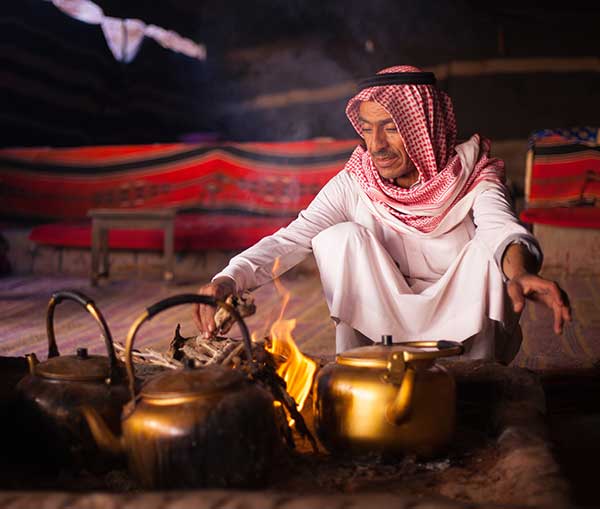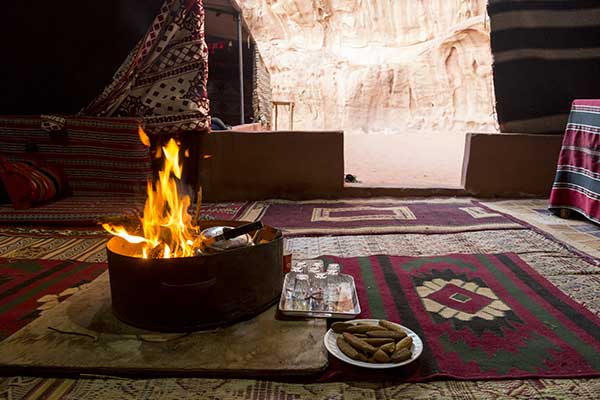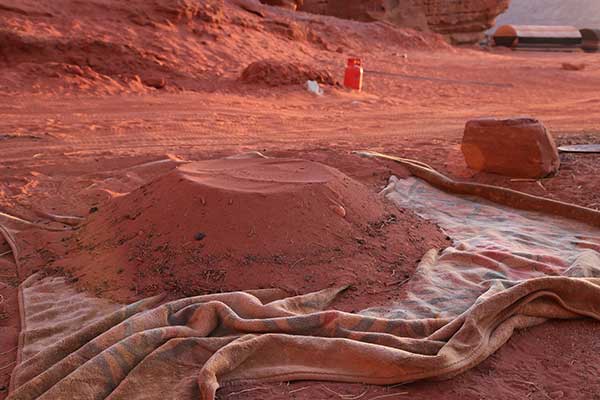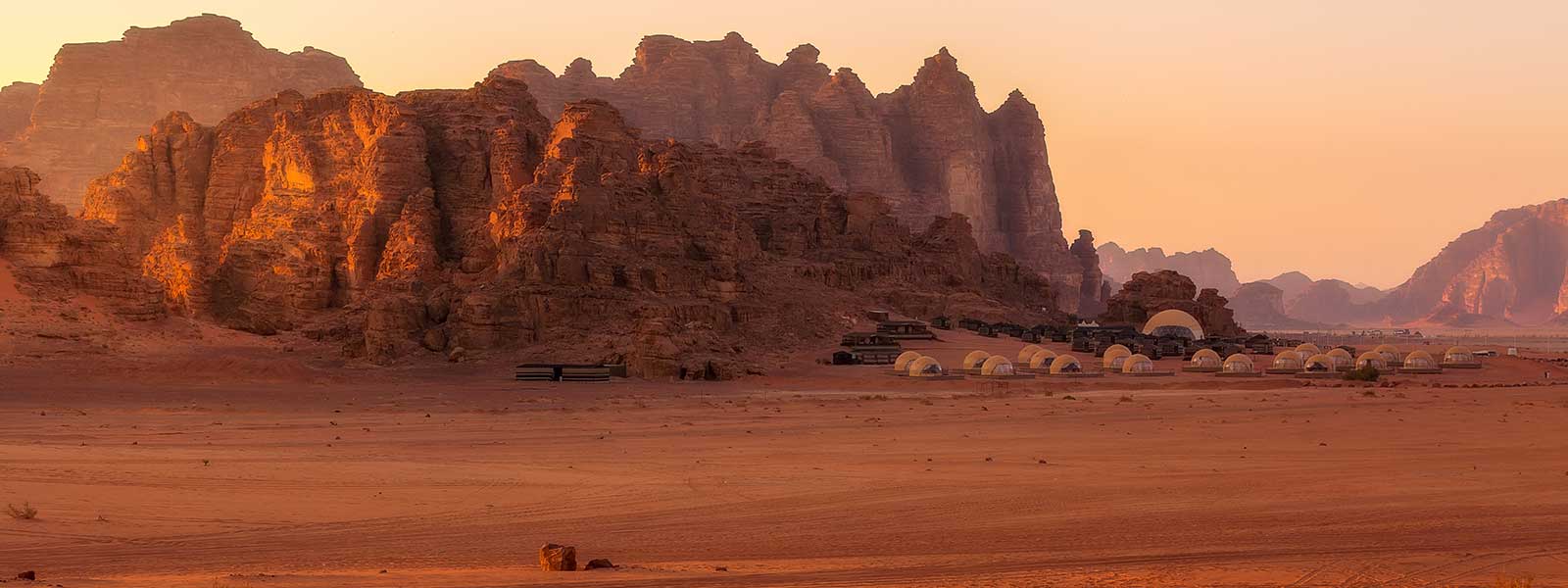the lawrence of arabia way
This season, trade city skylines for the raw drama of Jordan’s desert in Wadi Rum. Here, in private glass-domed suites of luxury camps, Lawrence of Arabia camel safaris, Bedouin feasts, or even a helicopter transfer to Petra, you would be in a place where the air is crisp, the light is pure, skies are at their clearest, and constellations at their brightest. With the desert glowing differently at every hour, taking your breath away, you will make memories that feel eternal.
There are some places on earth you don’t just visit, you surrender to them. Wadi Rum, Jordan’s Valley of the Moon, is one such. A landscape immortalised in films and compared to Mars, you feel deliciously insignificant here. The Wadi is not simply sand and stone carved by wind and time; it is theatre, myth, and poetry. And in this season, October-November in particular, it is a place that takes on a magical quality—with the days bathed in golden warmth and the nights a gentle blanket of coolness under a sky sprinkled with stardust.
On leaving Amman, the highway to Wadi Rum stretches south along King’s Highway or the faster Desert Highway, across a flat golden expanse dotted with villages and olive groves. Four hours on, the terrain shifts dramatically to towering sandstone cliffs and wind-sculpted ridges rising like ancient sentinels. From Diseh, the last outpost before the protected desert reserve of Wadi Rum begins, the modern world recedes, the horizon opening up into a sweep of apricot dunes where every ripple in the sand tells a story and every rock face catches the light in surreal shades.
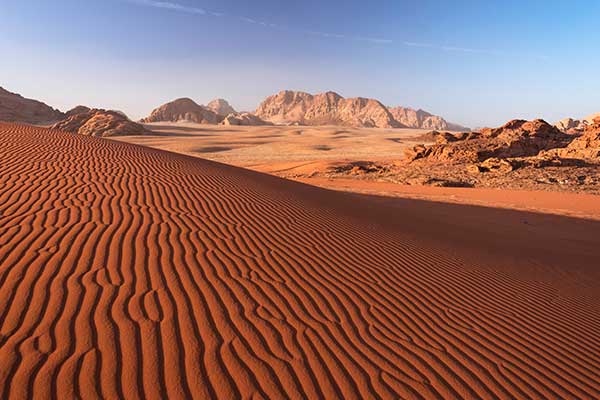
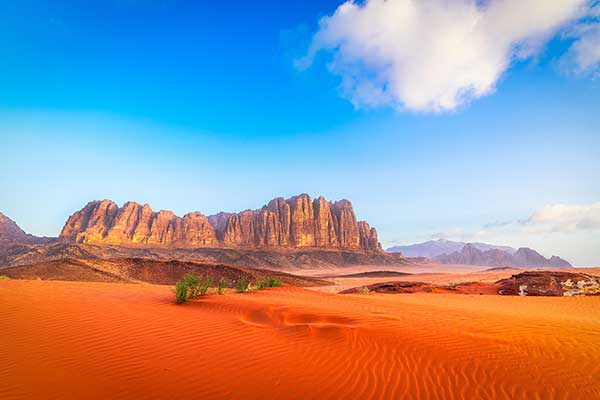
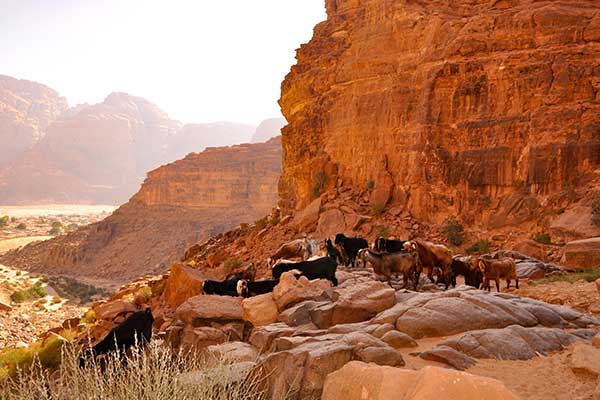
under the stars
No number of reels will have prepared you for the moment Wadi Rum first unfolds before your eyes—the air, the colours, and the way the sky bends close to touch the endless stretch of earth. And, away from the noise of cities, you suddenly find yourself in a silence that is not empty, but full.
How do you experience such a place? First, from inside luxury glass-domed suites, laying in the comfort of the bed—watching the galaxy open up overhead, unframed by any telescope lens. The Milky Way unfurls in luminous ribbons, with even a shooting star or two racing across the sky. Set against the red dunes, these camps blend Bedouin tradition and colours with desert adventure and you feel the wilderness without the discomfort. With air-conditioning for the day’s warmth, soft duvets for the cool nights, and the luxury of privacy while still feeling part of the desert’s grand stage—it is a paradox that only Wadi Rum delivers.
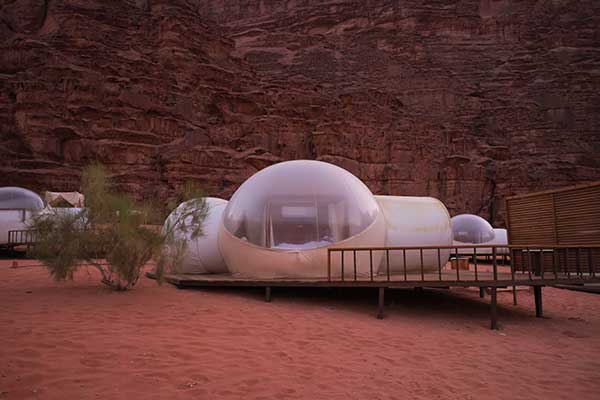

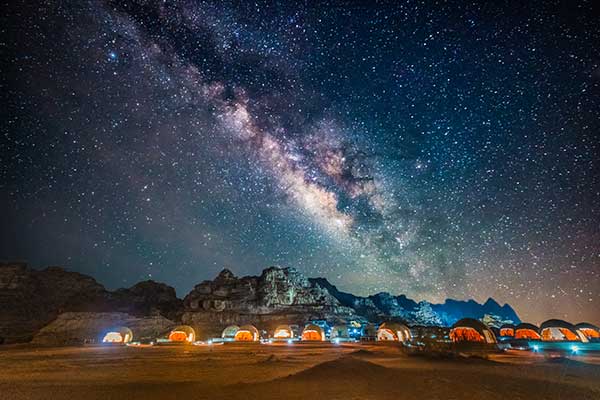
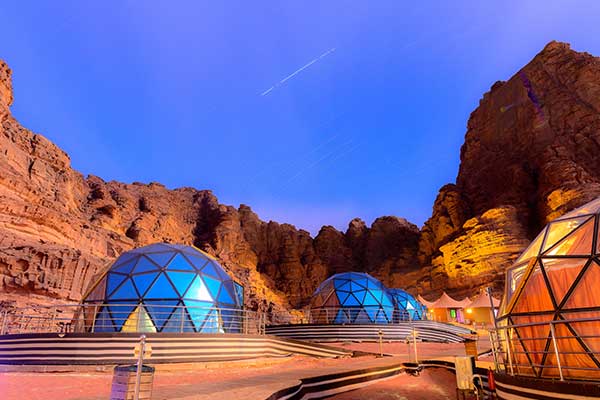

the sway of bliss
Having slept under the stars and stepping barefoot onto the deck in the mornings, the desert comes up like an unrolled Persian carpet and the days stretch unhurried. After breakfast (choices include vegetarian, vegan, halal, gluten-free, kosher) you want to experience Wadi Rum the Lawrence of Arabia way. Here, where David Lean immortalised Lawrence in sweeping cinematic frames, a camel safari is not about getting from one point to the other; it is about slowing to the rhythm of the desert, the rhythm of your thoughts. Across ochre plains on the back of camels, with the desert stories of your Bedouin guide hanging in the wind, you feel a passage into another world. (Although, you could feel quite the same in a 4x4 vehicle, or even horseback!)
Wadi Rum’s silent grandeur comes up first at the Seven Pillars of Wisdom—an immense sandstone massif that rises like an ancient fortress, holding stories of battles and journeys. From there, the trail winds into deeper dunes and the historic oasis framed by dramatic cliffs—Lawrence’s Spring. Here, camels rest at the trickle of water, and you find yourself cradling a hammered copper cup of Jordanian mint tea brewed on a Bedouin fire, a ritual as old as the desert itself.

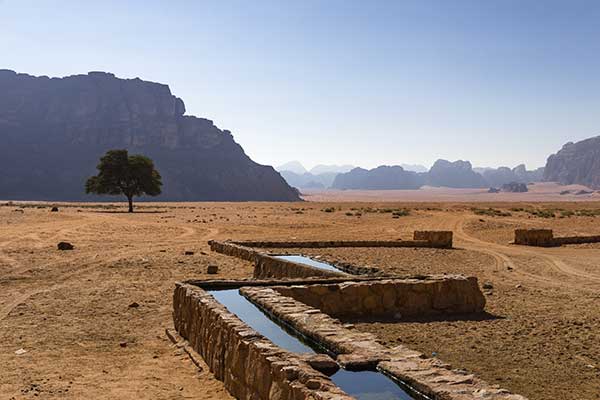
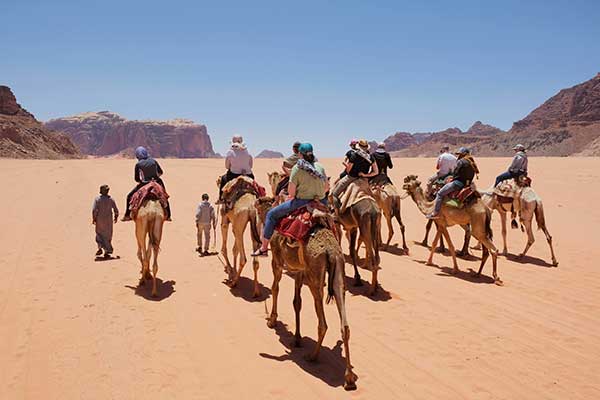
drama rolled out
As the caravan presses on, the landscape grows more dramatic. Wide valleys like Khor al Ajram stretch endlessly, framed by cliffs—their walls with Nabataean and Thamudic inscriptions and etchings speaking of caravans long vanished. At Khazali Canyon, you step down from your camel to trace the petroglyphs of hunters and deities, figures that seem to dance in the shifting light.
Lunch is a feast cooked underground and eating the fragrant meal in the shade of a rock arch that looks like nature’s own sculpture, life is stripped down to essentials. What makes the experience unforgettable is not just the desert but the way Wadi Rum strips away the noise of modern life, leaving you face to face with the vastness of the universe.
By late afternoon, the trail comes up at Um Fruth Rock Bridge, a delicate arch sculpted by time. If you climb it, the world spreads wide beneath you and the desert’s silence feels infinite. Then comes the magic hour everyone waits for: sunset, when Wadi Rum trades its golden glow for deep pinks and purples and the sand beneath your feet cools; when you want to sip mint tea as a silver crescent moon rises.
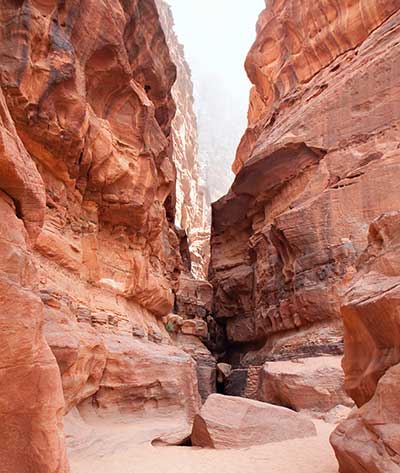
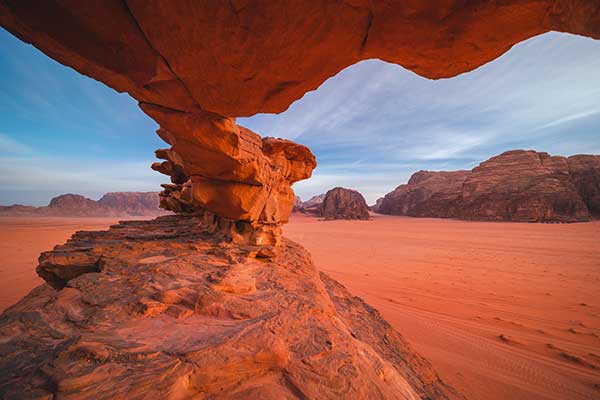
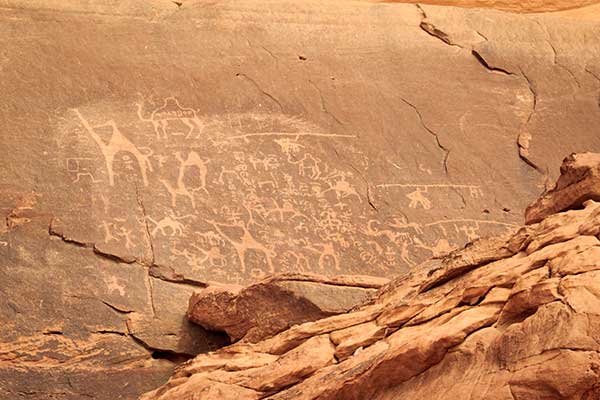
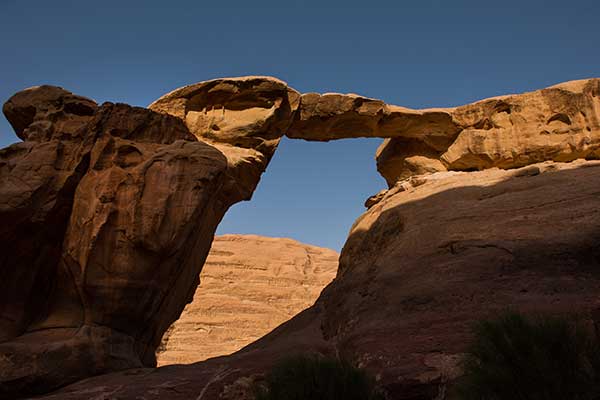

up above the world
Another experience as exclusive as unforgettable is slipping away from earth on hot air balloons just as the sun crests the horizon. During the two-hour flight, with Wadi Rum’s legendary cliffs glowing rose-gold and shadows stretching dramatically across valleys, the endless expanse of red sand, rock bridges, and canyons reveals itself in breathtaking scale. If ballooning is not your style, there are micro-light flights above the beautiful rock formations of Wadi Rum. From up above, you encounter this piece of sacred earth at its most majestic: a luxury of silence, sky, and space, when suspended between worlds you feel a privileged spectator of nature’s masterpiece, lingering long after you have touched down.
petra from the sky
While no Jordan adventure is complete without Petra, the rose-red city carved into cliffs two hours away from Wadi Rum, it is how you arrive that makes the difference. Most walk through the Siq, that dramatic narrow gorge that opens like a curtain to reveal the Treasury in all its majesty. But from Wadi Rum, you can sweep in by helicopter—soaring over jagged ridges and deserts until suddenly the Nabataean wonder reveals itself from above. The contrast between the raw wilderness of Wadi Rum and the intricate artistry of Petra is staggering. It is like you have travelled in time—from a prehistoric landscape to a lost city of kings. You land, step out, and entering through the Siq before the tourist rush, Petra is yours alone for a moment.
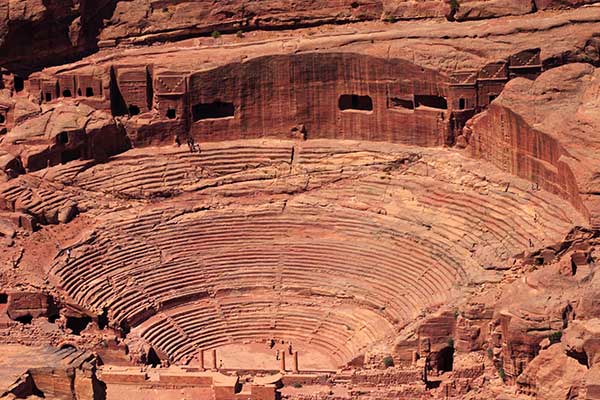
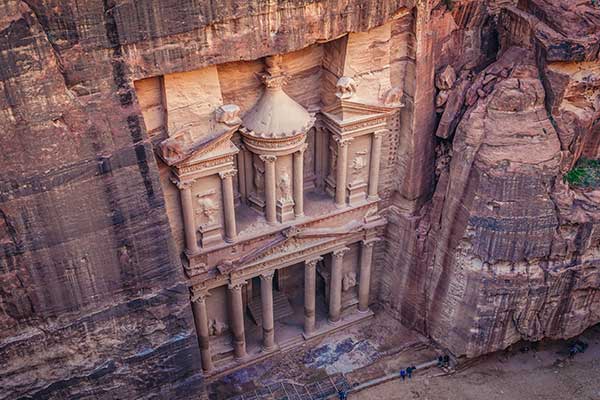
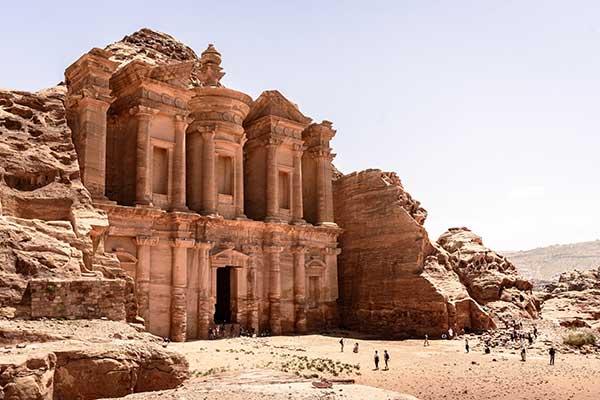
hearthside
In Wadi Rum, when the desert night deepens, fires crackle and Bedouin songs rise against the silence. If you choose to step into a Bedouin camp, you are greeted at a tent perched on a cliff’s edge, its air rich with the smoky perfume of food cooking slow in sealed vessels beneath the sand on hot coals. Tucking into saffron-flecked rice or flatbreads still breathing heat, lanterns trembling in the breeze, a song threads through the silence—the meal feeling like the desert’s own embrace.
The beauty of Wadi Rum lies in its contrasts. One moment you are indulging in the luxury of a glass dome, the next you are sipping tea in a Bedouin tent. One day you are riding camels through timeless dunes, the next you are skimming over them in a helicopter. It is raw, yet refined; harsh, yet deeply hospitable.
